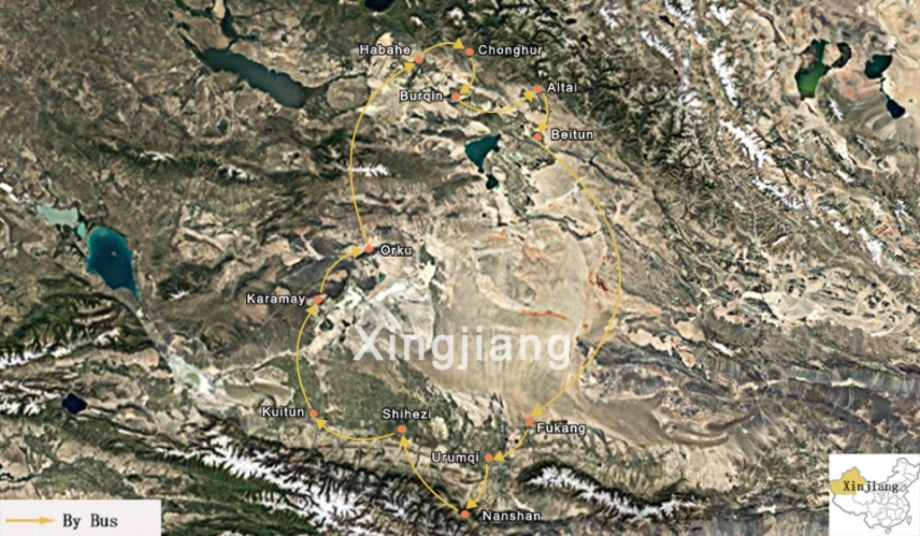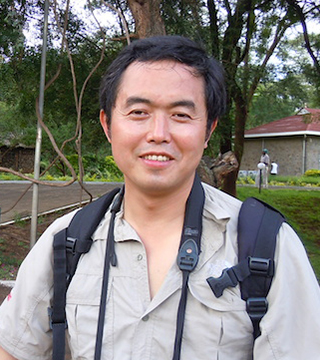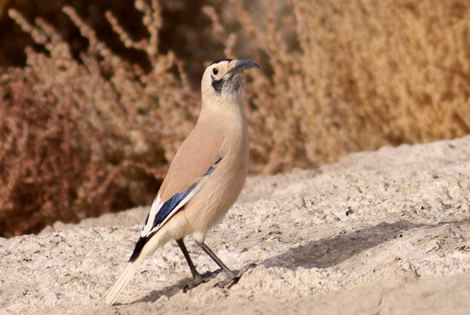Tour Info Sheet
| Highlight Birds | Daurian Partridge, Mongolian Ground Jay, White-tailed Eagle, Pallas's Fish Eagle, Long-legged Buzzard, Booted Eagle, Himalayan Vulture, Golden Eagle, Montagu's Harrier, Pallid Harrier, Saker Falcon, Eurasian Scops Owl, Pallid Scops Owl, Shikra, Demoiselle Crane, White-headed Duck, Red-crested Pochard, Common Pochard, Ferruginous Duck, Smew, Goosander, Lesser Sand Plover, Kentish Plover, European Roller, Eurasian Three-toed Woodpecker, Lesser Spotted Woodpecker, White-winged Woodpecker, Yellowhammer, Great Grey Shrike, Turkestan Shrike, Bearded Tit, Coal Tit, Azure Tit, Crested Lark, Horned Lark, Northern House Martin, Great Reed Warbler, Booted Warbler, Asian Desert Warbler, Barred Warbler, Cetti's Warbler, Sykes's Warbler, Lesser Whitethroat, Rosy Starling, Common Starling, Mistle Thrush, Blue-capped Redstart, Isabelline Wheatear, Northern Wheatear, Bluethroat, Common Rock Thrush, Rufous-tailed Rock Thrush, Black-throated Accentor, Tawny Pipit, Tree Pipit, European Greenfinch, Common Linnet, Red-headed Bunting, European Goldfinch, Common Linnet, European Greenfinch, Mongolian Finch, Saxaul Sparrow, Spanish Sparrow, Rufous-tailed Scrub Robin, Pallas's Sandgrouse, Chukar Partridge, etc. |
|---|---|
| Numbers of Species to Expect | 130-180 |
| Ease of Birding | mostly easy birding with a few tricky species |
| Highlight Mammals | Mongolian Wild Ass, Przewalski's Horse, etc. |
| Other Attractions | Islamic cuisine, rich ethnic minority culture, stunning desert scenery |
| Photography Opportunities | birding focused but with very good photography chances |
| Habitats Covered | subtropical forests, woodlands, grasslands, wetlands, deserts |
| Expected Climate | comfortable, temperature varies widely from day to night, rain is possible |
| Physical Requirements | mostly easy, demanding but optional in certain parts |
| Accommodation | comfortable |
| Transportation | 19-seat van |
Dates & Prices
| Dates | Booking Status | Price | Single Supplement | Group Size | Guides |
|---|---|---|---|---|---|
| May 22 - Jun 1, 2025 | Space Available | TBA | TBA | 6-8 | Local Guides |
3. Discretionary tips to guides and drivers.
Itinerary
Tour Map

Guide(s)
We will arrange one of our best local guides for this trip who has rich experience of guiding tours in this region. The following are some of our best local guides in and around this area.
Philip He
Bella Zhang
Bella, the director of AlpineBirding, graduated from Sichuan Agricultural University with a Bachelor's Degree. She joined AlpineBirding in early 2016 and became the director of AlpineBirding in 2018. She was born and grew up in a Bai ethnic family in Yunnan Province which boasts of the largest number of bird species in China. Her interests toward birds started with her observation of a Long-tailed Minivet in her mom's garden at a very young age. As she grows up, the interests and love toward birds become stronger and stronger. Because of that, she found AlpineBirding before graduation and joined the company for further learning of birds. Bella has guided a number of birding trips in cooperation with AlpineBirding guide in the past years, her passion, readiness to help and detail-oriented attitude have won her lots of praise from our clients.










